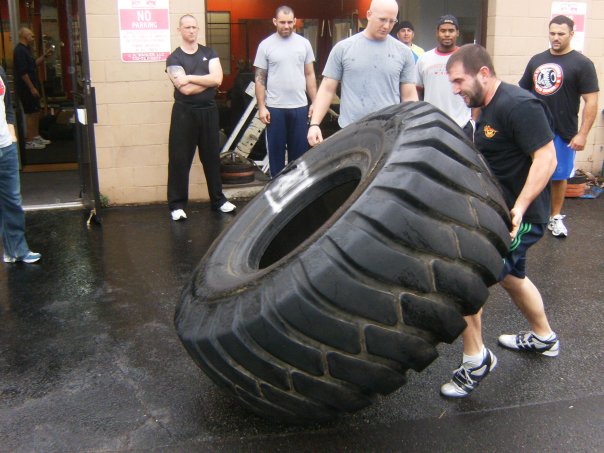Successful wrestlers are often different in their intensity to the sport than other athletes. Throughout college and my years in the fitness industry I have had the privilege of working with numerous high school and collegiate All-Americans and National Wrestling Champions. They were all a little different, and I mean that in a good way. Successful wrestlers must utilize different training methods then other athletes. Wrestlers not only need to build overall strength through core lifts, such as squats and dead lifts, but to be a deadly wrestler they MUST also train using odd objects and complexes.
Odd objects training means using heavy stones, sandbags/sand balls, ropes, kegs, and any heavy object where the weight distribution is uneven. Be creative, as this can make the training fun! Odd object training will help the athlete better prepare for war by developing greater core and stabilizing strength. When shooting a double or hitting a high crotch how often is the opponent’s body weight evenly distributed? NEVER! Why then only train using dumbbells and barbells where the weight is evenly distributed?
Complexes are another method of training that every wrestler should be using to improve their sustained strength and increase their lactic threshold. A complex combines multiple movements into one. Complexes can be done for time or repetitions. What will complexes do for you on the mat? How many times have you seen… or even worse, been… the athlete that has nothing left in the tank? The first period went well, and then suddenly you hit that wall. Arms and legs are numb and you cannot do anything about it.
Sustained Strength is strength over a long period of time. If you can bench press 500 pounds but are gassed after one repetition how good will you be on the mat for 6+ minutes? Increasing the lactic threshold delays hitting the wall and prevents being gassed out on the mat.
An example of a complex that simulates a high school wrestling match of three two-minute periods would be performing four movements for thirty seconds each with a one-minute rest in between. While wrestling, you are constantly switching movement patterns throughout the period. Pushing, pulling, squatting, and lunging are all common movements throughout a match. Complexes are the closest thing to mimicking an actual match without physically wrestling. This is beneficial because it allows the athlete to improve his wrestling conditioning without risking burning out in the sport.
The athletes I train perform more rounds of a complex than periods in an actual match. Because my athletes train harder than the actual match their bodies are conditioned to that high intensity. I also introduce the “adrenaline factor” into training so when they are in a match, especially for a sectional or state title with thousands of screaming fans, they are accustomed to the “adrenaline rush” which leads to fatigue quicker then usual.
Complexes and odd object training are two important training styles to help you develop as a wrestler. Complex training should be incorporated into your strength program multiple times a week while odd object training should be used in the majority of training sessions.
The above training methods have improved my athletes’ mental toughness. Obviously, the benefits of being mentally tough are not only going to help when you’re in a tough match but also during practice. Many young athletes HATE practice, yet the harder you practice the more improvements you will see throughout the season. By developing that added mental toughness, through complex and odd object training, the athlete will be more consistent with his practice intensity, helping him improve his overall performance. Check out the video below for an example sandbag complex

No comments:
Post a Comment